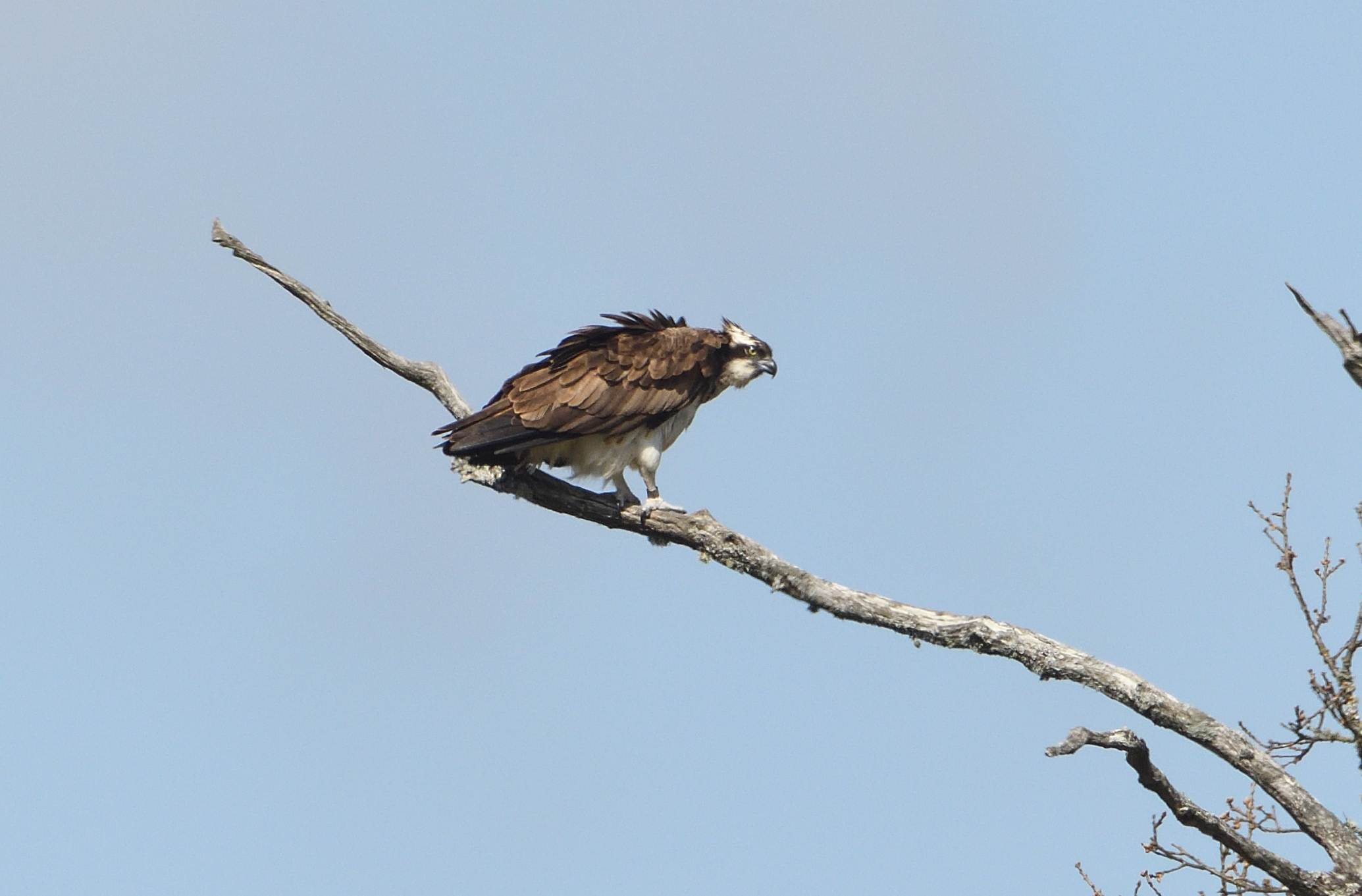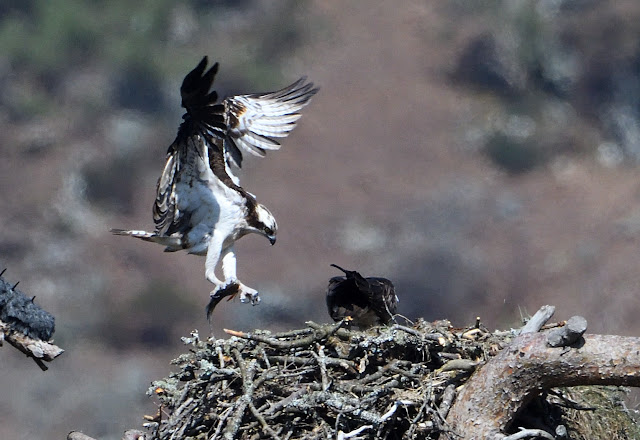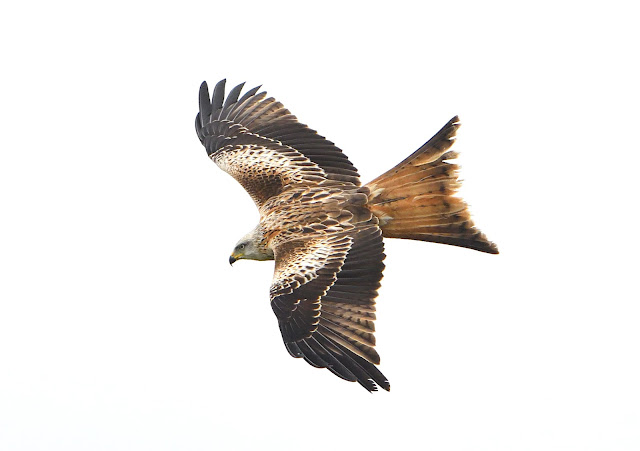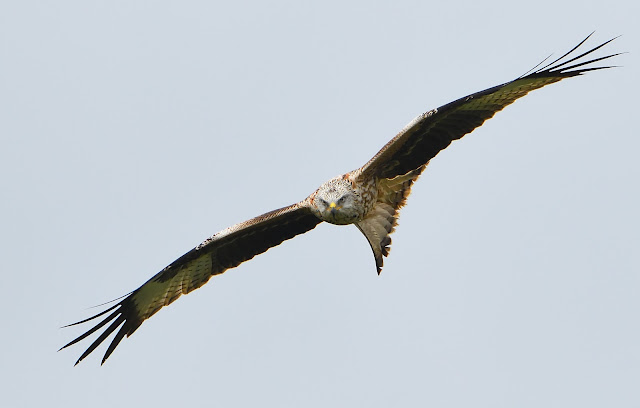Ospreys and Red Kites in Scotland
I have been fascinated by Ospreys, since following some of the online 'nest-cams' at locations around the British Isles. Most of the locations are run by the RSPB, or Wildlife Scotland and many locations have purpose built hides, which are available to the public to watch these amazing birds. With a wingspan of 1.5 metres Ospreys are one of europes largest birds of prey and the only kind that exclusively eats fish.
My first visit, was near to Castle Douglas, where I had been told there were a nesting pair. Although I did manage to locate the nest site, it was at least half a mile from them and simply not worth trying to photograph anything due to the distance. The following images were taken at my next location 'Loch of the Lowes' Wildlife Reserve in Perth, which was two hours north. Here, you can access two purpose built 'hides', overlooking the loch, but quite some distance from the nest site. I was using my 500mm lens with a 1.4 teleconverter, giving me 700mm, but this was still pushing the limits to get these shots below.
 |
| On its way back to the nest with lunch. |
 |
| Arriving home with a fish, to find the wife spring cleaning the nest. |
 |
| Once the male has delivered lunch, the female is quick to take it off to a nearby tree, to enjoy it in peace!. |
Ospreys are awe-inspiring birds, and can sometimes be witnessed over France, whilst making the remarkable 3,000 mile migration from sub-Saharan Africa to the UK, where they breed from mid-March and stay through to the end of the summer. Systematic persecution and low breeding numbers drove the Osprey to extinction in England for some 150 years. Thankfully numbers picked up in the Osprey’s Scottish stronghold and the species gradually spread south. In 1996 they were reintroduced to central England and the burgeoning population at Rutland Water spread to Wales. There are now close to 300 breeding pairs in the UK – the majority are in Scotland while numbers in England and Wales are on the up thanks to the efforts of Wildlife Trusts and private estates.
Having photographed them at 'Loch of the Lowes', I was subsequently invited to visit a private Scottish Estate, to photograph Ospreys truly in the wild. Usually, there are three pairs of Osprey at this secret location, but only one pair had arrived and I only had one afternoon to obtain any images. It was clear that I was going to have my work cut out, as the nest could not be seen from the estates roads and needed to be approached through some woods with extreme caution so as not to disturb the birds. Like all raptors, Ospreys are an endangoured species and as a schedule 1 protected bird, it is an offence to disturb them!
Having located the nest and set up my hide a safe distance away, I was happy with my position and had a great view.......of an empty nest!
 |
| Just a few hundred meters away and at 700mm, this position should have been perfect! |
Less than half an hour later, the female could be heard above and although not going to land on the nest, she did land in a nearby tree.
 |
| Not as near as I had hoped, but an Osprey nonetheless! |
 |
| The male arrived, complete with a fish, but quickly disappeared into a distant tree to consume it. |
Half an hour later, and back he came with the remains of the fish, which I was sure he would take to the female, but not a chance......he circled twice and went back to his tree to finish it off. - She did'nt look happy!
 |
| Not much of the fish remained, but he clung on to it. |
 |
| Don't think that she was impressed with his greed! |
A little later and a final fly-past and that was it, my final Osprey shots of the trip.......what an incredible bird and wonderful few hours.
 |
| Just a few hours, but what a few hours! |
and now to the Red Kites....
Another bird that was extinct in the UK, less than 50 years ago. The Red Kite is one of recent times most successful wildlife re-introductions. This magnificently graceful bird of prey is unmistakable with its reddish-brown body, angled wings and deeply forked tail. It was saved from national extinction by one of the world's longest-running protection programmes. It has now been successfully re-introduced to England, Scotland and Wales.
 |
| You would not want to be a rodent! |
My first Red Kite encounter on this trip, was at Bellymack Hill Farm near Castle Douglas. I have visited most of the UK's Red Kite centres and can honestly say that Bellymack Farm offers the best value for money out of all of them. No special hides at £50+ per person, but simply a brilliant cafe, with large viewing platform which is close to the action at just £5.00 per person!!
We arrived 30 minutes before the feeding time of 14.00 hrs and the sky was already full of circling Red Kites, waiting for their lunch. Sadly, it was a very overcast day, which made photographing these birds a little more difficult than normal, but I still managed to take almost 400 images. - Here are some before the feeding frenzy started.
 |
| It was a very dull day, but wildlife photography is always about compromise! |
Once the food was put out, it was the usual free for all, with approaching 100 birds wheeling in all directions. It's easy to get carried away with the shutter with so many birds in attendance, but I find it easier to wait for the initial flurry to pass. It is then easier to pick out one bird and concentrate on the shot that you're after.
In 1989, six birds were released at a site in Scotland and a further four birds were released in the Chilterns. Red Kites are extremely long-winged and long-tailed and very large, with slightly larger bodies and very much longer wings than a Buzzard. They are predominantly red, with dark wing tips and pale outer wings. The head is pale, with older birds developing almost white heads, and the long, red tail is deeply forked and used as a stabiliser in flight, twisting back and forth – a characteristic clue to the Red Kite’s identity, even with only distant views.
My next stop, was a few days later and this time at 'Argaty Red Kites' near Stirling. This place is advertised as Scotlands premier Red Kite Centre and whilst they have done some great work with these birds, I have to say that I was totally underwhelmed. In 3 hours, I counted a total of 12 birds, who kept their distance even when a small amount (and I mean a SMALL amount) of meat was put out. The owners told me about a Heron, that they found entertaining and would feed with the Red Kites. This Heron turned out to be the real villain of the afternoon, as he swept down and stole ALL of the food, before any Red Kites had even thought about feeding. Whilst I love all wildlife, I could easily have taken a 12-bore to this particular bird!
 |
| The best fed Heron in Scotland......took all of the food in 60 seconds! |
My total image count for the afternoon was less than 100 pictures, but at least they were decent images.
.JPG) |
| Red Kites at their aerobatic best. |

































This comment has been removed by the author.
ReplyDeleteThis comment has been removed by the author.
ReplyDelete